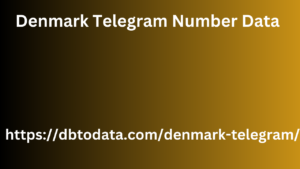Post by account_disabled on Mar 9, 2024 10:17:49 GMT
The different types of possible objectives can be defined in relation to the different company sectors: Marketing : generate traffic, engage potential customers, generate leads and reactivate existing customers Sales : Help close sales by validating and supporting the sales team's communications Customer Service : Improve customer satisfaction through top-notch service Webmaster : Simplify and optimize content updates and website management IT : Integrate with other systems, meet security, performance and scalability requirements Operations : Reduce costs by optimizing and automating workflows and tasks Human Resources : Attract and recruit new employees and support current employees Executives : Increase company profits and increase profitability. It is important to define very specific goals for the website.
When you have a list of goals, it will be easier for you to complete Denmark Telegram Number Data the next parts of the process. Domain name Photo by The Creative Exchange on Unsplash Now that your website goals are set, it's time to choose a domain name if you don't already have one. It is not strictly necessary to have a domain to create a professional website, but this certainly becomes essential when you want to publish it and strongly associate it with your brand or product. A proven and working way to create a “persona” (a portrait of your ideal customer) is to create an empathy map . The writer who invented this process is David Gray, author of “ The Connected Company ” and “ Gamestorming ”.

An empathy map can vary in shape and size, but the basic elements are a whiteboard divided into four quadrants: “Thinking”, “Seeing”, “Doing”, “Feeling”. The idea is to cover the board with post-it notes of as many elements as possible in these four areas, creating the portrait of your perfect customer. Even if creating a professional website makes you think of more technical things than empathizing with your ideal customer, you absolutely must not underestimate this aspect. Insights ersona/ Website objectives Photo by Estée Janssens on Unsplash One of the most common reasons websites fail is that they don't define exactly what they want to achieve. To create a professional website you must have very clear objectives. When it comes to project management, there's a proven strategy for setting goals based on an easy-to-remember acronym: SMART stands for Specific, Measurable, Assignable, Realistic, and Time-Related . This approach will provide you with a framework that will increase your chances of achieving your goals.
When you have a list of goals, it will be easier for you to complete Denmark Telegram Number Data the next parts of the process. Domain name Photo by The Creative Exchange on Unsplash Now that your website goals are set, it's time to choose a domain name if you don't already have one. It is not strictly necessary to have a domain to create a professional website, but this certainly becomes essential when you want to publish it and strongly associate it with your brand or product. A proven and working way to create a “persona” (a portrait of your ideal customer) is to create an empathy map . The writer who invented this process is David Gray, author of “ The Connected Company ” and “ Gamestorming ”.

An empathy map can vary in shape and size, but the basic elements are a whiteboard divided into four quadrants: “Thinking”, “Seeing”, “Doing”, “Feeling”. The idea is to cover the board with post-it notes of as many elements as possible in these four areas, creating the portrait of your perfect customer. Even if creating a professional website makes you think of more technical things than empathizing with your ideal customer, you absolutely must not underestimate this aspect. Insights ersona/ Website objectives Photo by Estée Janssens on Unsplash One of the most common reasons websites fail is that they don't define exactly what they want to achieve. To create a professional website you must have very clear objectives. When it comes to project management, there's a proven strategy for setting goals based on an easy-to-remember acronym: SMART stands for Specific, Measurable, Assignable, Realistic, and Time-Related . This approach will provide you with a framework that will increase your chances of achieving your goals.
